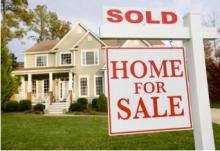Owners
Comparing Three Certification Metrics That Drive Sustainability in Affordable Multifamily Housing
In building or retrofitting affordable multifamily housing, owners and developers committed to sustainability have several certification metrics to choose from, depending on their goals, budget, and practicalities. In this moderated panel, three experts will examine the benefits and challenges of the metrics they chose for their projects: Enterprise Green Communities, Passive House, and Zero Net Energy. Through case studies, our panelists will discuss the motivating factors behind each chosen metric, impacts on the design and construction process, and resulting performance.
How Energy Efficiency Creates Opportunities & Financing in Multifamily Housing
More banks are beginning to incorporate green and high performance building into their mortgage underwriting process for multifamily properties. If leading lenders begin to encourage and provide incentives for owners to pursue energy and water efficiency and renewable energy at the time of rehab, refinance or acquisition, the results could be transformative for the industry. On this panel, three leading lenders - the Community Preservation Corporation, Fannie Mae, and Bank of America - will discuss their approaches to green underwriting and opportunities for building owners to access more financing and discounts by going green. The panel will discuss pathways to helping stakeholders integrate efficiency upgrades into major capital events, like refinancing, while recommending additional measures that can be done during tenant turnover.
Liquid Assets: Water Monitoring and Conservation in Multifamily Buildings
We all know we should be saving water in our multifamily buildings, but how? Most tenants pay their own electric bills so switching off lights makes economic sense, but since water is usually included in rent, thousands of running toilets and leaky faucets go mostly neglected every day.
Lightning Round! Day 1: Lessons from The Field
New this year, Lightning Rounds pack as much information into one session as possible. You’ll hear succinct, to-the-point, and practical presentations on a variety of topics, including: Chilled Beam Advantages: Chilled Beam systems offer a unique opportunity to integrate the HVAC system into the architectural elements of a building while reducing energy costs, maintaining enhanced indoor air quality and promoting significant occupant comfort.
The Key to the Castle: Who Has It and Do They Know Where the Lock is?
Improving the operational performance of buildings requires highly skilled and qualified workers, particularly as building technologies become more advanced. Yet many lack the skill-set they need to maintain these facilities. This session will cover what happens when you don’t train or engage building operators in effective O&M strategies.
Performance-Based Procurement: Infusing Your New Construction Contract with Energy Requirements
The obstacles to a high performing building are legend, but those barriers can now be surmounted. A new performance-based procurement process, developed and successfully executed at NREL, targeted and achieved an EUI of 35 kBtu/sf/yr while keeping costs in check.
Affordable Passive House Commercial Buildings - Secrets Revealed
High performance commercial buildings cost 10- 25% more to build than conventional buildings, right? Adam Cohen of Passiv Science has been designing and building high performance commercial buildings at costs comparable to typical new construction and achieving Passive House level results. This workshop will explain the basics of Passive House design principles specific to commercial buildings. It will then go into the details of how buildings like dental clinics and college dormitories can be built at market rate while achieving Passive House standards. Integrated Project Management will be discussed as will details, equipment, controls and areas for capturing money typically left on the table in conventional design-bid-build project delivery situations.
The Value of R-Value and NPV of PV: Selling High Performance Homes in an Indifferent Market
The ideal client hires you to build a net zero energy home, or to complete a deep energy retrofit of their existing home. Two questions arise: How will the energy efficiency improvements impact the value of the construction loan? How much value is added to the home when it’s time to sell? These improvements change the value of the home and the perception of the home by potential buyers. It is up to the real estate agent, the appraiser, and the seller to understand and convey the potential value to a buyer. Learn from leading advocates, market participants, and analysts about the contributory value of energy efficiency improvements and energy producing technologies like solar and geothermal. Find out how these improvements increase homeowner equity and how they translate at the point of sale. Overcome the barriers preventing realizing value for efficiency in real estate transactions.
Making Money by Saving Energy
Do all major capital improvements result in better buildings with lower operating costs, better energy management strategies and improved data collection? This panel will discuss the changes made throughout their portfolios to improve NOI, reduce maintenance costs and improve operations, and present the challenges associated with planning for new technologies and staff training so savings can be realized.
Passive House: Affordable, Retrofit, and Huge
Probably the most adopted newer certification in the building industry, Passive House is a US and international standard that small to very large owners are using to build and retrofit. Simple, affordable, and durable, this standard works in many types of buildings. Learn from four experienced practitioners about how smaller buildings are retrofitted, how affordable housing is built within budget, and how large scale dormitories and other buildings will be built in the future.

